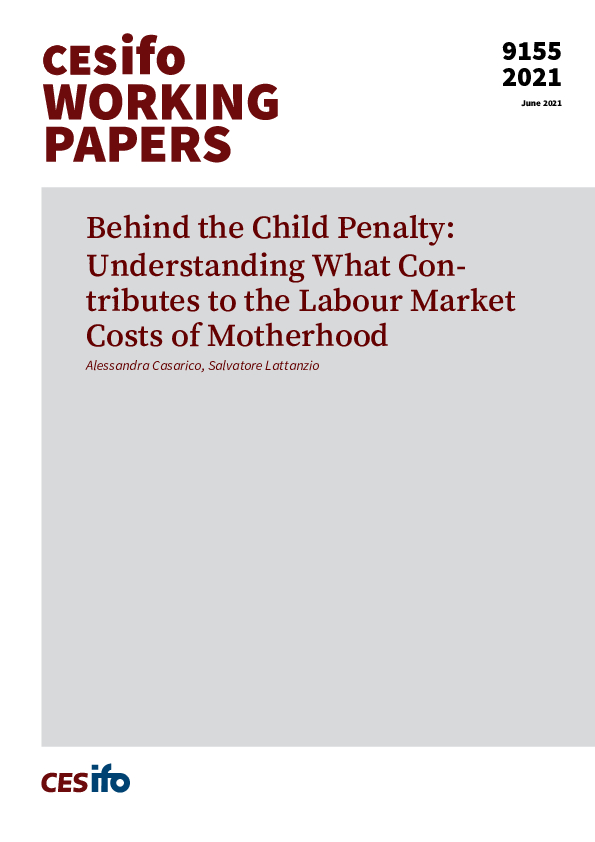Behind the Child Penalty: Understanding What Contributes to the Labour Market Costs of Motherhood
CESifo, Munich, 2021
CESifo Working Paper No. 9155

We study the short- and long-run impact of motherhood on labour market outcomes and explore the individual and firm-level factors that influence it. Using matched employer-employee data for Italy over 1985-2018, through an event study methodology around childbirth, we show that the long-run child penalty in annual earnings is 57 log points and it largely depends on the change in labour supply along the intensive margin. The birth of a child increases the probability of transition to non-employment, reduces the likelihood of having executive roles and increases that of working in firms with lower productivity, sales, capital and wages, providing evidence of sorting into worse firms after childbirth. In the heterogeneity analysis, we find that the child penalty is higher for young, low-wage mothers and those taking longer leaves. It is larger in firms with less generous pay, worse peers, in more gender-conservative regions and where childcare services are scarcer.
Public Finance
Labour Markets